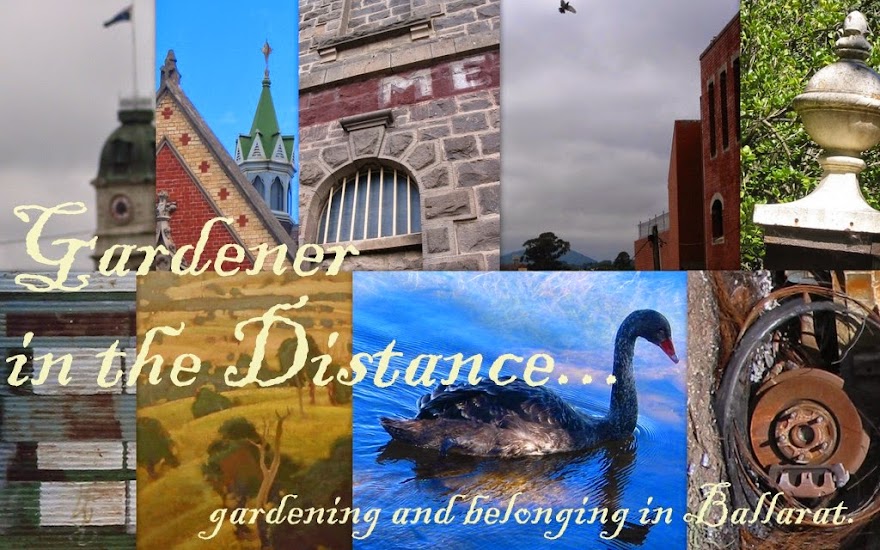It was an unusually beautiful morning, the ground wet and cool, the sun shining. My neice is going overseas, and today my family had a lunch to launch her. On my way to my sister's inner-city warehouse space, I decided to stop and wander in the grounds of the Royal Exhibition Building and its surrounding Carlton Gardens. Above, the building's wonderful cupola.
"Completed in 1880 for Melbourne's first international exhibition", this impressively massive building was the first in Australia to achieve world heritage listing. Above, some of its very green and leafy grounds.
Adjacent to the Central Business District, these broad, orderly and geometrically-alligned gardens have a typically Victorian sense of scale.
Nonetheless, a new branch of the Melbourne Museum has been constructed in its grounds. Above, see part of its wonderfully eye-catching, out of kilter annexe, seeming to sink, as it does, into the ground.
Designed by the multi-award-winning Denton Corker Marshall, like many 21st century buildings, it is striking, and relies for its impact on the conservative or natural background in which it resides.
Much of the planting around the original building is in the traditional Victorian 'bedding out' style. I'm not normally fond of it, but I tip-toed my way through, and understand how easily such a format or approach lends the viewer a sense of propriety, a sense of surveyance.
There are several fountains on site, including this, above, 'The Exhibition Fountain', designed by Josef Hochgurtel in 1880.
Papyrus, of course, were a Victorian favourite...and water, so rewarding.
The scale is monumental, but Melbourne then was the richest city in the world.
The image above gives you a sense of scale.
It was through these doors that I went for my final school examinations...impending doom or great promise?
Fortunately, and despite the very Englishness of it all, a number of magnificent native Eucalypts thrive, more ancient than the theatre imposed around them.
See our strong light and the clarity of our blue, blue skies.
One of many fine views, above, on the corner of Rathdowne and Pelham Streets, is this, the Corpus Christi College.
And here, above, the resident gardener's cottage, on the corner of Rathdowne and Carlton Streets. Melbourne's history, however knocked about or dismantled it may have been, is its linchpin.
We do not though, stop, it seems, here, in the Southern Hemisphere. See another section of the new Melbourne Museum, above, bold and brave, with its delectably crooked windows..
My favourite human intervention is this, this statue commemorating the reign if Queen Victoria, with its pair of blonde kangaroos.
Beneath the pair, above, this wonderful plaque of an emu, an exception, surely, to Victorian discipline, yet a prime example of all the Victorians sought to discover.
The day has been so glorious. I was lucky to have had plenty of time to wander through the gardens, and to make my way to my sister's.
Her home has this unconventional rooftop sitting space, with views across to all sorts of semi-industrial, reclaimed architecture, bits of roof, stretches of sky.
Here she is, Belinda, on the left, having given us a wonderful lunch of all sorts, with kipfler potatoes and shallots, chicken, broad-beans with leeks, pizza, a most glamorous profiterole thing, and Brillat Savarin and blue Saint Agur cheeses, with an amazing hand-made Limoncello from Adelaide, among other things. My gorgeous neice, Georgia, is in the middle, and my lovely mother is on the right. My brother-in-law, Steve, was off on the side, keeping us entertained.
And that's not all. Here, above, is my gentleman nephew, Lachlan, a most charming and good-natured man.
Good, eh? How often do you get to have a day to explore an inspirational garden and connect with family, and be treated with kid gloves?


















































